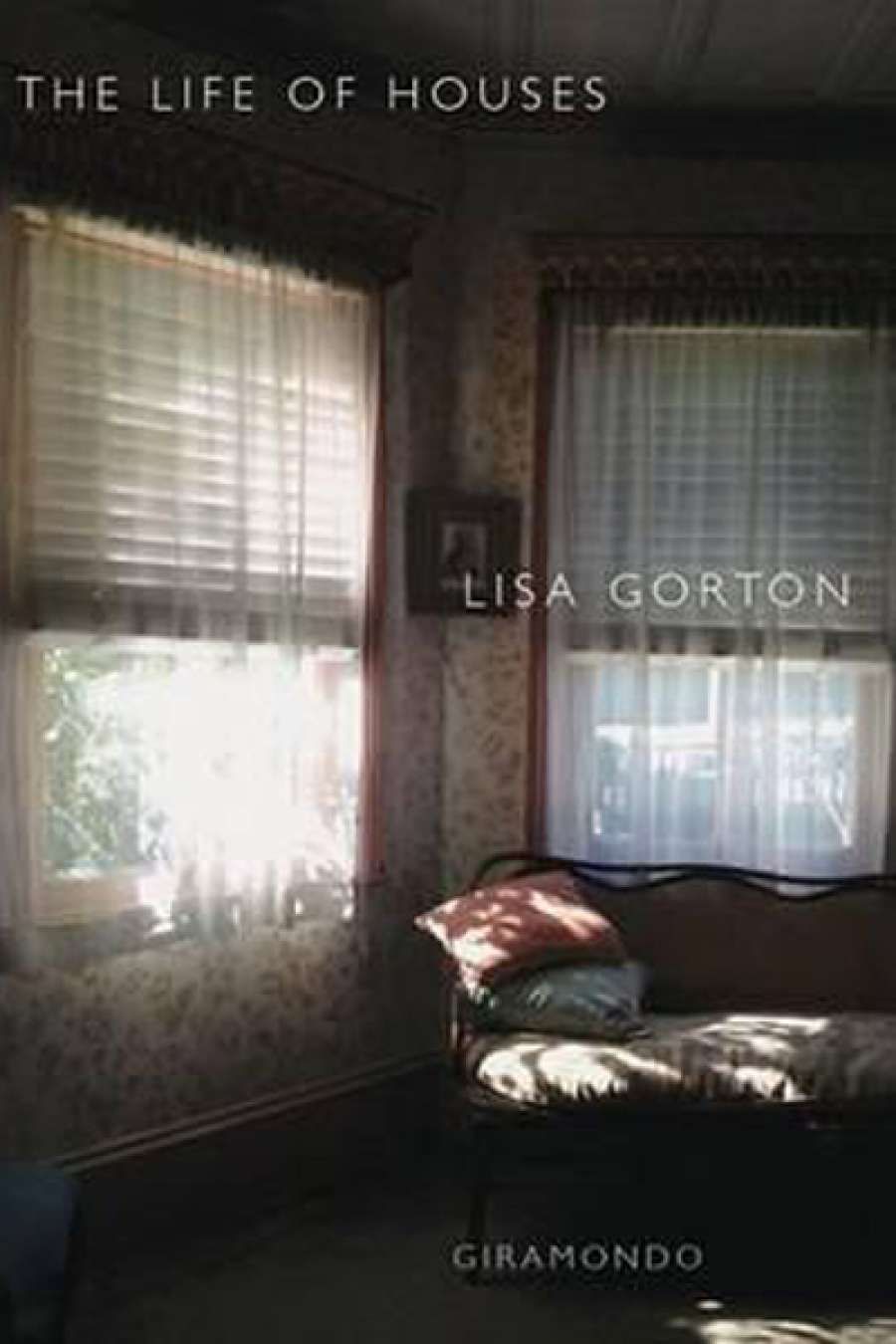
- Free Article: No
- Contents Category: Fiction
- Custom Article Title: Catriona Menzies-Pike reviews 'The Life of Houses' by Lisa Gorton
- Review Article: Yes
- Online Only: No
- Book 1 Title: The Life of Houses
- Book 1 Biblio: Giramondo, $26.95 pb, 224 pp, 9781922146809
We discover early on that Kit and Anna, a sophisticated and cynical gallerist, have not visited the Sea House since Kit was a little girl. The house is unfamiliar to Kit because her family members are strangers to one another, if not properly estranged. We soon learn that Kit’s father, Mark, has returned to his mother in England, and that neither Kit nor Anna is quite certain of the status of that relationship.
As Kit is absorbed by the interiors of her mother’s childhood, Anna whiles away a day in her daughter’s Melbourne bedroom, lost in the photo albums Kit compiled for a school project. Kit has been dispatched to the Sea House so that Anna can spend a week with her new lover, Peter, a lawyer who has just left his wife, Clare. This is the rarefied milieu of The Life of Houses, a novel that is preoccupied with the family histories that linger in houses.
The lives of the characters in this novel can’t be unpicked from the spaces they inhabit. When for the first time Peter visits the Melbourne house Anna shares with Kit, Anna finds herself ‘estranged’ from her surroundings: ‘it was wrong to have him here, where her everyday haunted all they did.’ Hitherto, their affair had been conducted in hotels. Houses, however, are where intimacy resides. To celebrate crossing the threshold into Anna’s domestic space, Peter has brought a bottle of Moët. As he hunts for glasses, Anna watches him and Gorton delivers a sharp observation on the uneasiness of the unavoidable intimacy of houses: ‘if she had paid attention to where he looked, she thought, she would have known where he and Clare kept their champagne flutes.’
‘The lives of the characters in this novel can’t be unpicked from the spaces they inhabit’
How do our houses define us? Gorton’s reflections on space and identity have little in common with the real-estate fixations of reality television. For the property hounds of The Block and Renovation Rescue, home renovation is a proxy for self-improvement. The Sea House, however, like so many literary piles before it, defies renovation. It will keep its ghosts and unless Kit and Anna resist, they will be overwhelmed by the ghosts of the past. We come eventually to understand why Anna stayed away for so long.
 Lisa Gorton
Lisa Gorton
Audrey, who has been almost completely absorbed by the Sea House, is a cautionary figure. The obese, bed-ridden matriarch devotes her days to compiling a meticulous history of her home. With nosy questions and shrewd guesses, she grasps at details of the lives of her daughter and granddaughter in order to compose a family narrative. Neither Anna nor Kit is particularly forthcoming, and Gorton shows restraint in the scenes she elects to write. From chapter to chapter we move from Kit’s point of view to her mother’s until their narrative paths finally converge. Like Audrey, we must work to piece a narrative together. Linearity is vexed, however, because Kit and Anna so completely inhabit each other. Theirs is a relationship built around repetitions of speech, gesture, and instinct.
‘How do our houses define us?’
Audrey tells Kit, ‘I liked houses at your age. Not many do. This house will come to you, of course, which makes a difference.’ What difference does it make? To her granddaughter, being positioned in a family story of matrilineal succession and cross-generational exchange matters a great deal. When Kit sees her name neatly entered in the family tree, she is affronted. Separated from her mother and, for the first time, situated within a larger family romance, Kit is forced to reflect upon the house and habits that are, according to Audrey and to Kit, to be her inheritance. What life exists beyond houses and families and repetitions?
The Life of Houses is a nuanced and intelligent reflection on the spaces mothers and daughters share. Anna’s is the loudest voice in this novel and she dominates its first half, just as she dominates her daughter and her lover. As Kit emerges from the shadow of her mother and from the houses in which they have lived, however, her efforts to redefine the spaces around her and to structure an identity for herself are compelling.


Comments powered by CComment